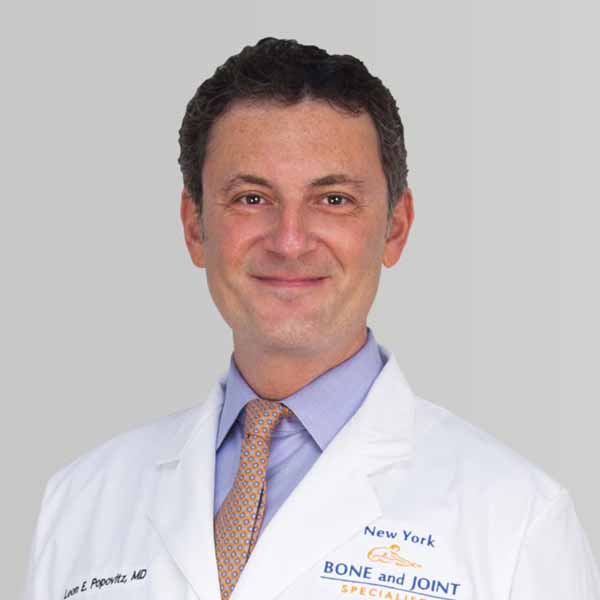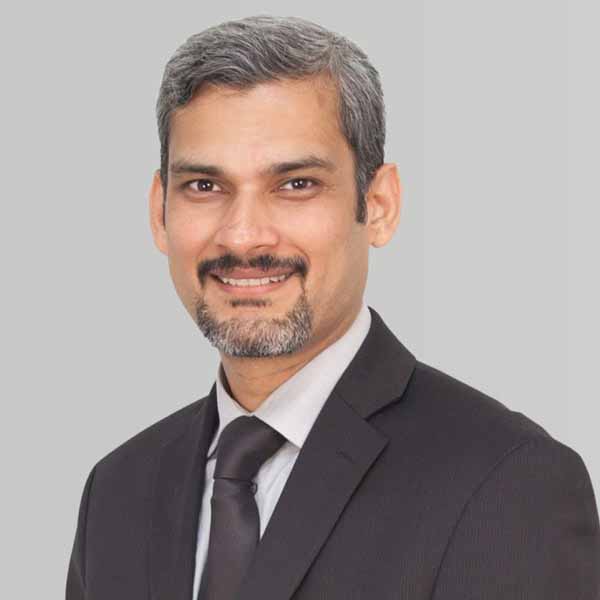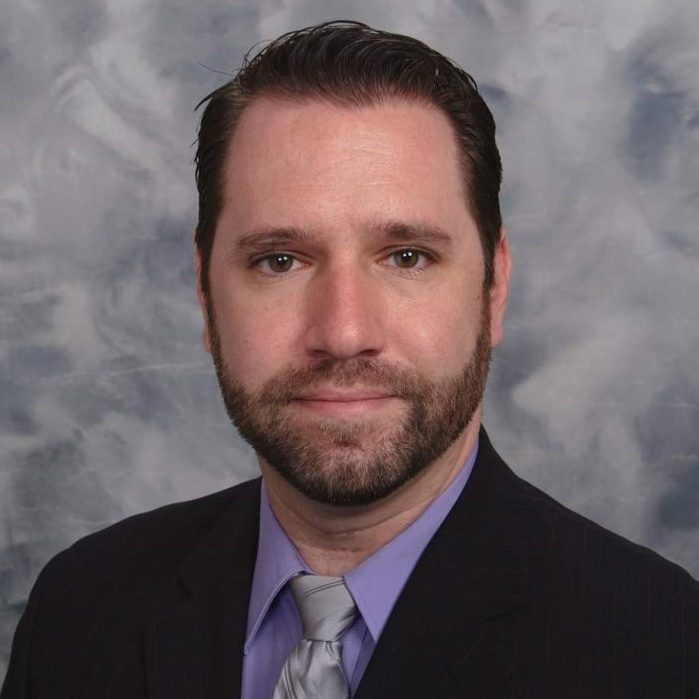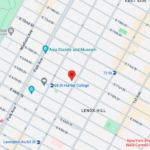Find expert rotator cuff surgery and treatment from the best shoulder specialists in New York and beyond.
Say, you’ve taken a bad tumble and now your shoulder aches all the time. Or perhaps your shoulder pain started as mild, but now it’s extremely painful, so much so that simple tasks like reaching for an object on a shelf are excruciating, and sleeping is nearly impossible due to the pain.
What’s causing your shoulder pain could be a rotator cuff tear caused by either a sudden trauma (like a fall or accident) that impacts the shoulder joint, or a chronic condition resulting from the slow degeneration of the soft tissue of the shoulder.
Rotator cuff tears are a common orthopedic problem, with many patients visiting their doctor because of debilitating shoulder pain.
Fortunately, rotator cuff tears are extremely treatable both with conservative methods and surgery if needed. At New York Bone & Joint Specialists, our expert rotator cuff surgery orthopedists will start you on a treatment plan. We have the experience and expertise to explore your treatment options, perform a successful rotator cuff surgery, and help you achieve long-term pain-free arm movement again.
What is the rotator cuff, and how do injuries occur?
Your shoulder is what is known as a ball-and-socket joint. It’s what gives the joint the ability to rotate in different directions. When it’s injured or torn, the shoulder’s mobility is greatly restricted, in addition to severe pain.
Let’s take a closer look at your shoulder. It consists of three bones:
- The humerus (upper arm bone)
- The scapula (shoulder blade)
- The clavicle (collarbone)
The ball, or head, of the upper arm bone fits into a socket in the shoulder blade, giving the joint its mobility.
Keeping the bones in place while also giving the joint its range of motion is the rotator cuff— a group of four muscles that act as tendons. The tendons wrap around the head of the humerus and connect it to the shoulder blade.
Rotator cuff tears, as mentioned previously, are quite common and typically arise due to these injuries or conditions:
Acute injury. A hard impact on the shoulder due to a fall, sporting injury, or accident can result in a rotator cuff tear. A broken collarbone or dislocated shoulder is often linked to rotator cuff injuries, too.
Degenerative causes. As we age, the tendon fibers slowly thin, leading to a tear in the rotator cuff over time. This is why rotator cuff tears are more common in people over 40. This is because the blood flow to the rotator cuff decreases with age, which can weaken the muscle fibers, leaving them susceptible to tears.
Repetitive motions. Repeated overhead motions can cause the tendons of the rotator cuff to fray. Tennis players, baseball players, and weightlifters stand the greatest risk of a rotator cuff tear. But anyone who reaches overhead for work, such as painters and carpenters, is also more likely to suffer a tear of this kind.
Bone spurs. A bone spur on the top of the shoulder blade can cause friction between the rotator cuff and the bone. Over time, that friction results in a tear.
Treatment depends on the nature of the tear and the activity level of the patient. Older adults and less active individuals may benefit from conservative, non-surgical therapy.
Meanwhile, surgery may be recommended for athletes, active adults, or significant tears, or if conservative methods fail to promote a complete heal.
What are rotator cuff tear symptoms?
Rotator cuff symptoms can feel like a dull ache in the shoulder or a sharp, stabbing pain. You’ll experience more intense pain if the rotator cuff is torn due to a traumatic injury. Tears linked to degeneration of the tendons tend to be smaller and milder.
In general, rotator cuff tear symptoms include:
- Nighttime pain. The pain becomes more severe at night if you lie on the affected shoulder.
- Functional limitations. The shoulder feels weak, and you’re unable to lift your arm without discomfort.
- Physical signs. The shoulder is stiff, and you may hear a cracking sound when rotating the joint.
A rotator cuff tear has two classifications:
- Partial. A partial tear occurs when the rupture doesn’t extend through the thickness of the tendon, and the tendon remains attached to the bone.
- Complete tear. Also known as a full-thickness tear, the tendon completely detaches from the bone.
Rotator cuff tears may not produce noticeable symptoms. However, if the shoulder is painful and weak for an extended period of time, consult with your physician for an accurate diagnosis or a referral to a specialist.
How are rotator cuff injuries diagnosed?
A rotator cuff tear can be diagnosed by an orthopedic. Here are some of the tests he or she will perform:
Physical examination. The doctor will move your shoulder to assess its range of motion. He or she may determine if there are any tender spots in the shoulder, as well as evaluate your arm strength.
Imaging tests. An MRI or an ultrasound scan provides a closer look at the soft tissues in the shoulder so the doctor can see where the tear is located and how deep it is. An X-ray is typically not done because it only images the bones, not the tendons. However, X-rays can find other conditions that may be causing the shoulder pain, such as arthritis.
Tests will be done to rule out other possible reasons for the shoulder pain, such as a pinched nerve in the neck. If the shoulder pain is caused by a rotator cuff tear, you and your doctor can discuss your treatment options.
How are rotator cuff injuries treated?
For rotator cuff tears, you have two treatment choices. In the hands of the skilled practitioners at New York Bone & Joint Specialists, both will lead to a successful outcome and a pain-free return to your normal activities.
NON-SURGICAL
Rest. Avoid any activity, especially those that involve overhead motions, that causes pain.
Physical therapy. A physical therapist can guide you through gentle rotator cuff exercises designed to strengthen the muscles around the shoulder and improve range of motion.
Medications and injections. Nonsteroidal anti-inflammatory medications such as ibuprofen and naproxen can ease the pain. Your doctor may also prescribe a steroid injection.
Lifestyle modification. A physical therapist or occupational therapist can also help find ways to do everyday activities, such as reaching for objects, without experiencing discomfort. In general, you’ll need to modify your activities to avoid any pain or unnecessary straining of the shoulder.
SURGERY FOR ROTATOR CUFF TEARS
Rotator cuff surgery is recommended when conservative methods fail to relieve pain, you have a complete tear, or a tear larger than 3 centimeters. The goal of the surgery is to reattach the tendon of the upper end of the arm, or humerus. Types range from:
Open surgery. During this rotator cuff repair procedure, the surgeon makes an incision of several inches over the shoulder. The shoulder muscles are then opened so the surgeon gains access to the torn tendon, so he or she can repair it and reconnect it to the bone.
Arthroscopic surgery. Arthroscopic rotator cuff surgery has overtaken open rotator cuff surgery. A minimally invasive procedure, arthroscopic rotator cuff surgery starts with a few small pin-hole incisions into the shoulder, through which the surgeon places a narrow telescope to view the injured tendon. The surgeon will then insert micro-instruments to reattach the torn tendon back onto the bone. The tendon is then held in place with an absorbable anchor to ensure stability as the tendon heals back onto the bone. Because it’s less invasive, arthroscopic rotator cuff surgery recovery times are shorter.
Mini-open rotator cuff surgery. A recent innovation, a mini-open rotator cuff surgery, begins with a smaller incision of three to five centimeters. Because of the smaller entry, the deltoid muscle of the shoulder remains intact. From there, it is similar to arthroscopic surgery.
What to expect during rotator cuff surgery recovery
Surgery usually takes a few hours, depending on the severity and thickness of the tear. The procedure is done as an outpatient procedure, so you can go home the same day.
How long to recover after rotator cuff surgery
After surgery, you’ll check in with your doctor every month until full recovery. You’ll follow this general timeline.
- Immobilization. You’ll put the arm in a sling for four to six weeks.
- Physical therapy. You may begin a gentle physical therapy program a few days following the operation. After that, you’ll begin a more intensive physical rehabilitation regimen to build strength and increase range of motion.
- Light activities. Less strenuous physical activities, such as light bicep curls and using an elliptical machine, can begin within six weeks. But more strenuous lifting must be avoided for five months.
- Return to normal activities. You can expect a full recovery and a return to your normal activities by five to six months after surgery.
Why choose New York Bone & Joint Specialists for rotator cuff treatment?
New York Bone and Joint Specialists are counted among New York’s best shoulder doctors and surgeons. For decades, patients have trusted our expertise. Here’s why:
- We prioritize the health and healing of your joints, essential for a long and active life.
- Our world-class joint specialists offer comprehensive and caring guidance, from diagnosis to full recovery, for a wide range of conditions.
- In over 90% of cases, our orthopedic treatments successfully resolve issues without the need for surgery.
- We are committed to complete patient recovery through conservative methods and expert surgical care when necessary.
Our top-rated rotator cuff specialists in NYC
New York Bone & Joint Specialists is founded on a philosophy of conservative methods first. This approach, prioritizing the body’s structures for long-term joint health, results in 90% of our patients recovering without the need for surgery.
If you require rotator cuff surgery in New York, the advanced surgical techniques our doctors use will make the procedure as comfortable as possible.
Our dedicated team of orthopedic doctors, surgeons, physical therapists, and support staff is committed to providing exceptional care and ensuring the lasting health and function of your joints, offering peace of mind to every patient. We take a patient-centered approach and incorporate your needs in the treatment process.
The expert team of shoulder doctors here in New York has decades of experience treating a range of shoulder problems and injuries, including rotator cuff tears.
Make an appointment today.
Start your recovery today. Book your appointment with New York Bone & Joint Specialists now.
Rotator Cuff Tears: FAQs
How do I find a rotator cuff doctor near me?
To find a rotator cuff doctor near you, ask your primary care physician if he or she knows of one. You can also ask a friend for a recommendation. Then, go to their website and research their credentials and whether they specialize in shoulder conditions. When you meet with the doctor, ask how many rotator cuff surgeries he or she has done. Go to one who has years of experience in rotator cuff repair and surgery.
How much does rotator cuff surgery cost?
Rotator cuff surgery cost depends on where you live, where the surgery is done (hospital vs. outpatient clinic), and the severity of the tear or injury. If deemed medically necessary, insurance will cover the cost. But as with any procedure, always check with your carrier first to get an estimate of copays and out-of-pocket fees. Talk to your provider about payment plans that allow you to pay the cost over time, if needed.
Do I need a referral to see a rotator cuff specialist?
Depending upon your carrier and state, you may or may not need a referral to a rotator cuff specialist. Check with your insurer first.
How long will I have pain after rotator cuff surgery?
Rotator cuff surgery is a serious operation, so you can expect pain for the first 48 hours after the operation. Afterwards, the pain gradually diminishes over days and weeks. Pain relievers and ice packs can manage any discomfort. If lying flat hurts your shoulder, sleep in a recliner as you heal.
Can rotator cuff tears heal without surgery?
While a torn rotator cuff will not heal by itself, surgery isn’t always necessary. Patients with partial tears usually can recover without surgery, especially if they’re older and less active. In such cases, physical therapy to prevent stiffness, rebuild muscle strength, and restore the shoulder’s range of motion can provide relief in as little as six weeks. If necessary, your doctor might also prescribe anti-inflammatories or a steroid injection to alleviate pain.
What rotator cuff exercises should I avoid?
Rotator cuff exercises involving heavy lifting should be avoided for at least five months. Repeated overhead and sharp, jerky motions of the arm that strain the shoulder should be avoided, as well. That includes swimming, tennis, and golfing.
Gentle stretching to improve range of motion is recommended. One to try is the pendulum:
- Lean forward and place one hand on a counter or table for support. Hang the affected arm freely at your side.
- Gently and slowly swing your arm forward and back, side to side, and in a circular motion.
When should I consider rotator cuff surgery?
If you ignore rotator cuff tear pain for too long, the tear will worsen, and you’ll be unable to rotate your arm at all. While the decision for surgery isn’t an easy one, these factors may push you to the procedure:
- The pain has been present for weeks or months.
- You find it difficult and painful to move your shoulder.
- Conservative treatment has failed to improve the pain or range of motion in the shoulder.
- The tear is large and can only be treated with rotator cuff repair surgery.
How successful is rotator cuff surgery?
For small tears, the success rate is very high. The prognosis for larger tears is still good, with a high success rate. Because small tears can grow larger, getting treatment early, while the tear is still manageable, can increase the chance of success.













